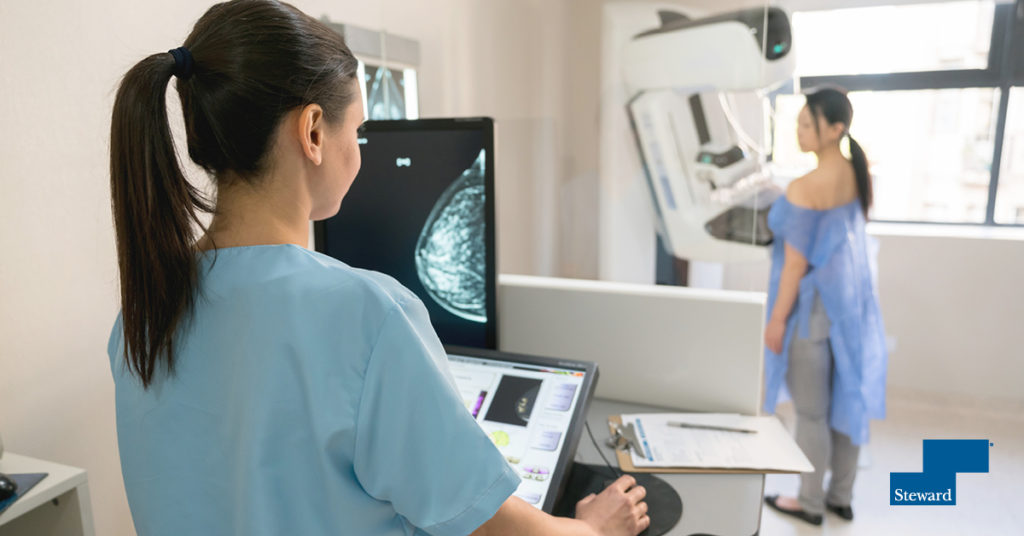Breast cancer is treated in several ways depending on the kind of breast cancer and how far it spread. People with breast cancer often get more than one kind of treatment. Doctors from different specialties often work together to treat breast cancer. Surgeons are physicians who perform operations. Medical oncologists are physicians who treat cancer with various forms of medicine. Radiation oncologists are physicians who treat cancer using radiation. There are literally hundreds of thousands of articles that have been written about breast cancer on a wide range of sites including the National Cancer Institute and the American Cancer Society.
The various treatments include:
- Chemotherapy. Medical oncologists use special medicines to shrink or kill cancer cells. The drugs can be pills taken orally or medicine given in your veins or sometimes both.
- Hormonal therapy. Blocks cancer cells from getting the hormones they need to grow.
- Biological therapy. This works with your body’s immune system to help it fight cancer or to control side effects from other cancer treatments.
- Radiation therapy. Radiation oncologists use high-energy rays (similar to x-rays) to kill cancer cells.
- Surgery. An operation where physicians remove the cancer tissue.
National Cancer Institute also lists other treatment methods such as clinical trials, which are new treatment options. The clinical trials are used to see if they are safe and effective. The NCI also lists complementary and alternative medicines, which are medicines and health practices that are not standard cancer treatments. According to the NCI complementary medicine should only be used in addition to standard treatments and alternative medicine is used instead of standard treatments. These include meditation, yoga, and supplements like vitamins and herbs, for example. Many kinds of complementary alternative medications have not been tested scientifically and may not be safe. Talk to your doctor about the risks and benefits before you start any kind of complementary or alternative medication.
According to the American Cancer Society, breast cancer treatment options depend on the stage of your disease and the following factors:
- The size of the tumor in relation to the size of your breast.
- The results of specific pathology tests.
- If you are a woman, whether you have gone through menopause. (Yes, men can have breast cancer as well, but that is a subject for a different article.)
- Your general health.
- Your age.
- Your family or other risk factors associating with a predisposition for developing breast cancer.
Which treatment is right for you?
Choosing the treatment that is right for you may be hard. Talk to your oncologist about the treatment options available for your type and stage of cancer. They can explain the risks and benefits of each treatment and their side effects (side effects are how your body reacts to drugs or other treatments).
Before selecting your treatment plan you should first understand the difference between standard treatment and clinical trials. Breast cancer standard treatments are methods that experts agree are appropriate, accepted, and widely used. The standard procedures have proven useful in fighting breast cancer in the past.
A breast cancer clinical trial, on the other hand, is an approved research study that some doctors believe has a strong potential to approved standard treatments. When clinical trials demonstrate better results than the standard, that new treatment becomes the standard. Remember, all our current standards were once clinical trials.
Surgery as a treatment for breast cancer.
For the purpose of this article let’s concentrate on various surgical options. According to the American Cancer Society most women with breast cancer have some type of surgery as part of their treatment. There are different types of breast surgery, and it may be done for different reasons, depending on the situation. For example, surgery may be done to: remove as much of the cancer as possible (breast, conserving surgery or mastectomy).
Find out whether the cancer has spread to the lymph nodes under the arm (scentinel lymph node biopsy or axillary lymph node dissection).
Restore the breast’s shape after the cancer is removed (breast reconstruction) relieve symptoms of advanced cancer.
Your doctor may recommend a certain operation based on your breast cancer features and your medical history, or you may have a choice about which type to have. It’s important to know your options so you can talk about them with your doctor and make the choice that is right for you.
Surgery to remove breast cancer.
Breast conserving surgery also called a lumpectomy, quadrantectomy, partial mastectomy or segmental mastectomy is a surgery in which only a part of the breast containing the cancer is removed. The goal is to remove the cancer as well as some surrounding normal tissue. How much breast is removed depends on where and how big the tumor is as well as other factors.
Mastectomy is a surgery in which the entire breast is removed including all the breast tissue and sometimes other nearby tissues. There are several different types of mastectomies.
Choosing between breast conserving surgery and mastectomy.
Many women with early-stage cancers can choose between breast conserving surgery (BCS) and a mastectomy. The main advantage of BCS is that the woman keeps most of her breast. In most cases, she will also need radiation. Women who have a mastectomy for early-stage cancers are less likely to need radiation. For some women, mastectomy may be a better option, because of the type of breast cancer, the large size of the tumor, previous treatment with radiation, or certain other factors.
“Some women might worry that having a less expensive surgery might raise their risk of returning cancer. However, studies following thousands of women over two decades show that when BCS is done with radiation, survival is the same as having a mastectomy in people who are candidates for both types of surgery,” said Jason Radecke, MD, board certified general surgeon at Sebastian River Medical Center.
Surgery to remove nearby lymph nodes.
According to the American Cancer Society to determine if breast cancer has spread to underarm lymph nodes (axillary lymph nodes) one or more of these lymph nodes will be removed and looked at in the lab. This is an important part of figuring out the stage of the cancer. Lymph nodes may be removed either as part of the surgery to remove breast cancer or as a separate operation.
Mastectomy
A mastectomy is breast cancer surgery that removes the entire breast. According to the American Cancer Society, a mastectomy may be done for one of the following reasons:
- If a woman cannot be treated with breast conserving surgery (lumpectomy), which spares most of the breast.
- If a woman chooses mastectomy over breast conserving surgery for personal reasons.
- For women at very high risk of getting a second breast cancer. They will even sometimes choose to have a double mastectomy (the removal of both breasts).
“This is a decision made in collaboration with your physicians,” said Dr. Radecke.
According to Dr. Radecke there are several types of mastectomies. A simple or total mastectomy is a procedure where the surgeon removes the entire breast including the nipple, areola, and skin. Some underarm lymph nodes may also be removed depending on the situation. Most women even if they are hospitalized, can go home the next day. The surgeon may choose skin sparing mastectomy. In this procedure, most of the skin over the breast is left intact. Only the breast tissue, nipple and areola are removed. The amount of breast tissue removed is the same as with simple mastectomy and implants or tissue from other parts of the body can be used during the surgery to reconstruct the breast.
Many women prefer skin sparing mastectomy because it offers the advantage of less scar tissue and a reconstructive breast that seems more natural,” says the American Cancer Society. However, it may not be suitable for large tumors or those that are close to the surface of the skin. The risk of local cancer recurrence with this type of mastectomy is the same as other types of mastectomies.
There are other types of mastectomies called nipple-sparing mastectomy, modified radical mastectomy, double mastectomy. These should be discussed with your physician of choice encourages Dr. Radecke.
Who should get a mastectomy?
Many women with early-stage cancer can choose between breast conserving surgery and a mastectomy. Some patients have a gut preference for a mastectomy to “take out all the cancer as quickly as possible.” But the fact is that in most cases mastectomy does not give you any better chance of long-term survival compared to BCS. Although most women and their doctors preferred BCS (with radiation therapy) when it’s a reasonable option, there are times when mastectomy is likely to be the best choice.
For example, mastectomy might be recommended if you:
- Are unable to have radiation therapy.
- Would prefer more extensive surgery instead of having radiation therapy.
- Have had the breast treated with radiation therapy in the past.
- Have already had BCS with re-excisions that did not completely remove the cancer.
- Have two or more areas of cancer in the same breast that are not close enough to be removed together without changing the look of the breast too much.
- Have a tumor larger than 5 centimeters (2 inches) across or a tumor that is large relative to your breast size.
- Are pregnant and would need radiation therapy while still pregnant. This risks harm to the fetus.
- Have a genetic factor such as BRCA mutation, which might increase your chance of a second cancer.
- Have a serious connective tissue disease such as scleroderma or lupus, which may make you especially sensitive to the side effects of radiation therapy.
- Have inflammatory breast cancer.
Breast Reconstruction After Surgery
There are several types of reconstructive surgery, but options depend on your medical situation and personal preferences. You may have a choice between having reconstruction at the same time as the breast cancer surgery (immediate reconstruction) or later (delayed reconstruction). If you are thinking about reconstructive surgery, it’s a good idea to discuss it with your breast surgeon and plastic surgeon before your mastectomy or BCS. This gives the surgical team time to plan out the treatment options that might be best for you even if you wait and have the reconstructive surgery later.
Some women choose not to have a reconstructive surgery. They choose a breast prosthesis (breast form) as an option. This is an option for women who want to have the contour of a breast under their clothes without having the surgery.
Recovering from a mastectomy
In general women having a mastectomy stay in the hospital for one or two nights and then go home. How long it takes to recover from surgery depends on what procedures were done and some women may need help at home. Most women should be fairly functional after going home and can often return to their regular activities within about four weeks. Recovery time is longer if breast reconstruction was done as well and can take months to return to full activity with some procedures.
Ask a member of your healthcare team how to care for your surgery site and affected arm. Usually, you and your caregivers will get written instructions about care after surgery and the instructions may include:
How to care for the surgery site and dressing;
- How to care for your drain if you have one;
- How to recognize signs of possible infection;
- Bathing and showering after surgery
- When to call the doctor or nurse
- When to start using your arm again and how to do arm exercises to prevent stiffness
- When you can start wearing a bra again
- Use of medicines, including pain medications and possibly antibiotics
- Any restrictions on activity
- What to expect regarding sensations or numbness in the breast and arm
- What to expect regarding feelings about your body image
- When to see your doctor for a follow up appointment
Taking care of yourself during treatment and beyond
“It’s important for you to take good care of yourself before, during and after cancer treatment,” says Dr. Radecke. If you’re a caregiver, this is equally important as the demands of caretaking can take a toll on your physical and mental health. Taking care of yourself includes:
- Eating well
- Staying as active as you can
- Finding an exercise routine that works for you
- Understanding your thoughts, emotions, and reactions
- Taking time for yourself
- Prioritizing your mental health
- Exploring meditation and mindfulness
For more information about the diagnosis and treatment of breast cancer, contact Sebastian River Medical Center at 772-589-3186.
To find a doctor or schedule an appointment, visit Steward DoctorFinder™.




